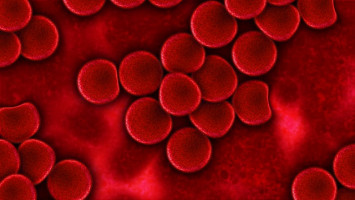
Bottom line: Among patients over 65 who received an allogeneic haematopoietic stem cell transplant (allo-HCT) for the treatment of acute myeloid leukaemia (AML) between 2000 and 2021, leukaemia-free and overall survival improved significantly over time.
Journal in which the study was published: Clinical Cancer Research, a journal of the American Association for Cancer Research (AACR)
Author: Ali Bazarbachi, MD, PhD, senior author of the study and a professor at the American University of Beirut in Lebanon
Background: AML is typically treated with targeted therapies or intensive chemotherapy, but if those treatments fail, allo-HCT—in which blood stem cells are taken from a matched donor and transplanted into a patient—is often required.
Historically, however, many patients over age 65 have been considered too infirm to receive intensive chemotherapy or allo-HCT.
Medical advances over the past 20 years—such as improved supportive care, newer generation anti-infectious agents, and high-resolution human leukocyte antigen (HLA) typing—have made allo-HCT a safer and more popular option for older patients with AML, which has a median age at diagnosis of 68, Bazarbachi explained.
“Over time, significant progress in allo-HCT has decreased mortality and allowed for the delivery of allo-HCT to older patients,” Bazarbachi said.
“However, little information is available about the global impact of these changes and the predictive factors for post-transplant outcomes, and available data on outcomes from retrospective and prospective studies are mixed.”
How the study was conducted: Bazarbachi and colleagues sought to examine how the outcomes of elderly patients after allo-HCT have changed over time, using data from a large transplant registry.
The researchers analysed a data set from the European Society for Blood and Marrow Transplantation, a working group of more than 600 transplant centers that report transplantation and follow-up data to a central registry.
The data set consisted of 7,215 patients who received their first allo-HCT for AML at age 65 or older, between 2000 and 2021.
At the time of their transplants, 64% of the patients were in their first complete AML remission, 14% were in their second complete AML remission, and 22% had active disease.
The researchers assessed outcomes in the three years immediately following allo-HCT.
They compared outcomes between patients treated from 2000 to 2009 (728 patients), 2010 to 2014 (1,775 patients), and 2015 to 2021 (4,712 patients).
Results: Relapse incidence decreased significantly from 37% to 31% to 30% across the three time periods; similarly, non-relapse mortality (death from anything other than AML) was 31% from 2000 to 2014 and decreased to 27% from 2015 to 2021.
Both leukaemia-free survival and overall survival steadily increased over time.
Leukaemia-free survival climbed from 32% to 38% to 44% across the three time periods, while overall survival climbed from 37% to 42% to 49%.
The researchers also studied the incidence of graft-versus-host-disease (GvHD), a potentially serious condition in which donor cells recognise the patient’s body as foreign and attack healthy tissues.
The incidence of chronic GvHD decreased from 35% between 2000 and 2014 to 31% between 2015 and 2021, and GvHD- and relapse-free survival rose from 22% to 29% to 34%.
Improvements in all outcomes except non-relapse mortality were observed regardless of whether patients were in their first complete response, second complete response, or had active disease at the time of transplant.
For patients with active disease, however, these differences were only significant in the most recent time period (2015 to 2021).
Decreases in non-relapse mortality were only observed for patients experiencing their second complete response.
Author’s comments: “We hoped these large-scale, real-world data could serve as a benchmark for future studies in this setting,” Bazarbachi said.
“Our study represents one of the largest analyses to date assessing trends over time and predictive factors for outcomes in elderly AML patients after allo-HCT.”
Bazarbachi emphasised that the steady improvement in outcomes after allo-HCT indicates the importance of offering the option to more patients over 65.
“In tandem with the marked increase in elderly patients receiving allo-HCT, we observed an impressive improvement over time in leukaemia-free and overall survival,” he said.
“These data indicate that allo-HCT should no longer be optional but should be mandatory for elderly patients.”
Study limitations: Limitations of this study include a lack of information about minimal residual disease for most patients, especially those treated before 2015. Additionally, no information was available about the maintenance therapies patients received after allo-HCT.
Funding & disclosures: Funding for this study was provided by the European Society for Blood and Marrow Transplantation.
Bazarbachi declares no conflicts of interest.